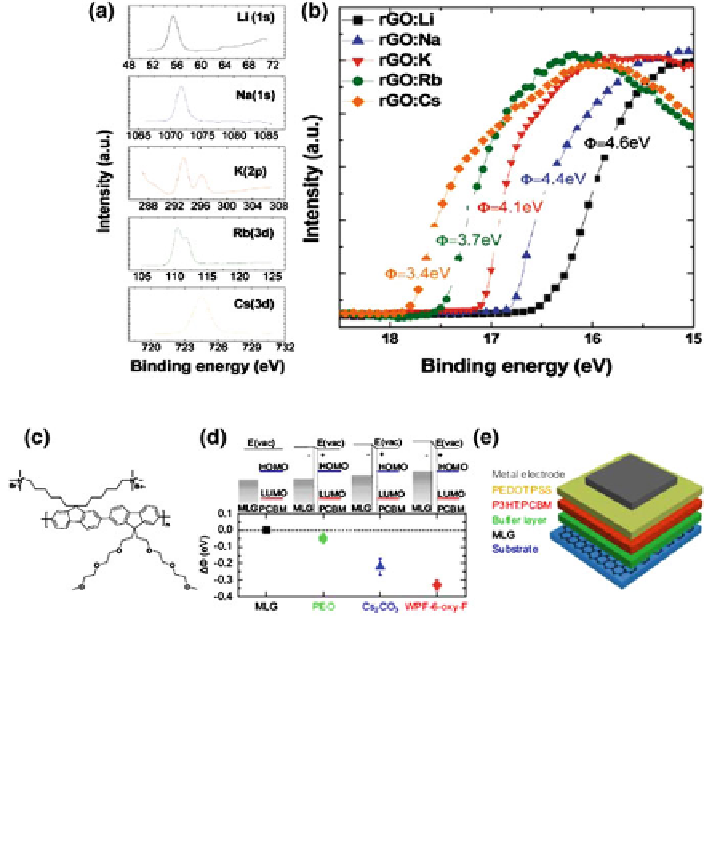Environmental Engineering Reference
In-Depth Information
Fig. 4.4 Measurements of the values of U
w
of the rGO-SWCNT films after doping with various
alkali carbonates. (a) XPS and (b) UPS spectra of the rGO doped with various alkali carbonates.
The pronounced peaks for the alkali metals indicate the successful doping of the alkali
carbonates. The work functions of the rGO-SWCNT films after doping with Li
2
CO
3
and Cs
2
CO
3
were 4.6 and 3.4 eV, respectively. The values of U
w
of the rGO-SWCNT films were determined
from the UPS secondary electron cutoff. (c) Molecular structure of WPF-6-oxy-F. (d) Changes to
the effective work functions of MLG films with interfacial dipole layers. (e) Schematics of an
inverted-structure OPV with the work-function-engineered MLG electrode. (a-b) Reproduced
with permission [
41
]. Copyright 2011,ACS (c-e) Reproduced with permission [
42
]. Copyright
2010, AIP
PCE of 1.27 %, which is comparable with that of the normal structure device. Lee
and his coworkers reported that the work function of MLG film grown by CVD
could be tuned by using thin interfacial dipole layers [
42
]. First, the MLG film was
transferred to the glass substrate, and one of the following three types of interfacial
dipole layers was spin coated onto it: 0.1 wt% solution of poly(ethylene oxide)
(PEO) in methanol, 0.2 wt% solution of Cs
2
CO
3
in 2-ethoxyethanol, or 0.2 wt%
solution of poly[9,9-bis((6'-(N,N,N-trimethylammonium)hexyl)-2,7-fluorene)-alt-
(9,9-bis(2-(2-(2-methoxyethoxy) ethoxy)ethyl)-9-fluorene)]dibromide (denoted as
WPF-6-oxy-F, Fig.
4.4
c) in methanol. The work function of the untreated MLG
film was 4.58 ± 0.08 eV, it could be modified when different interfacial dipole

Search WWH ::

Custom Search